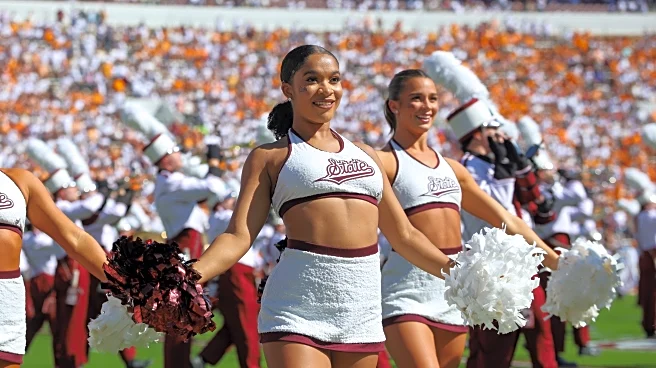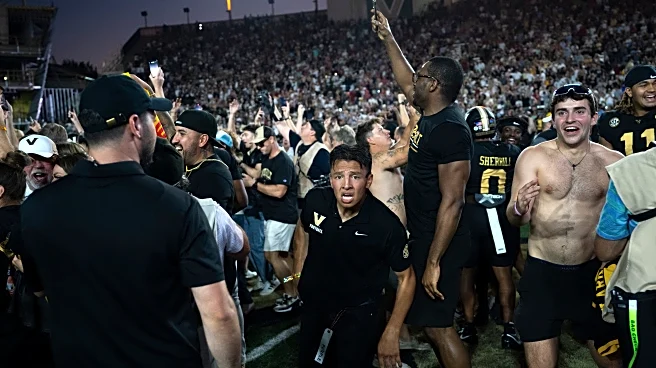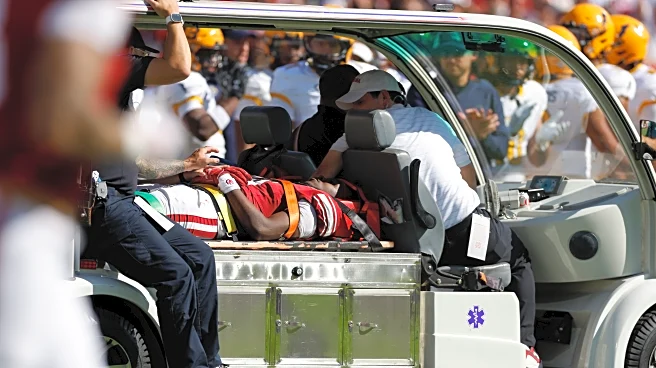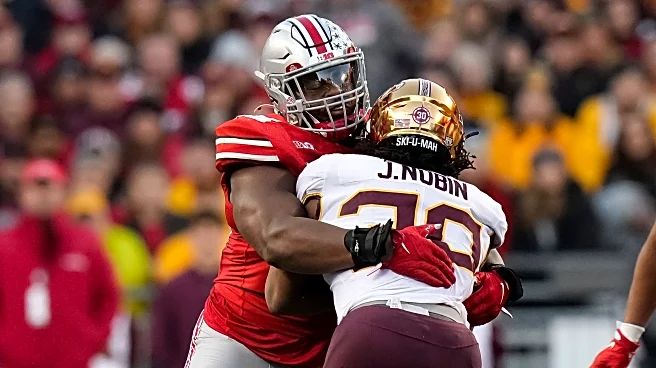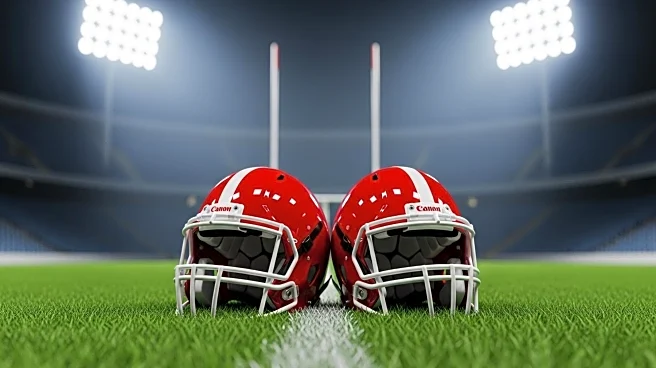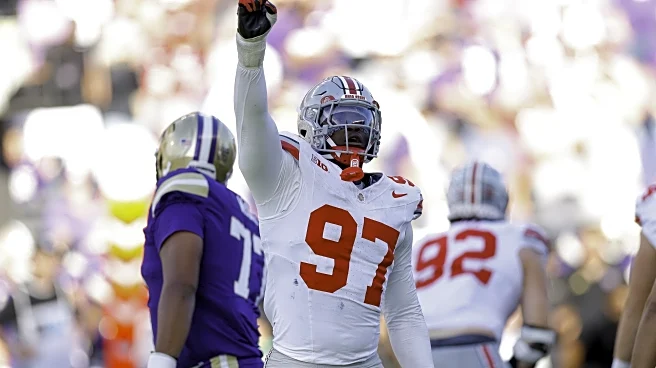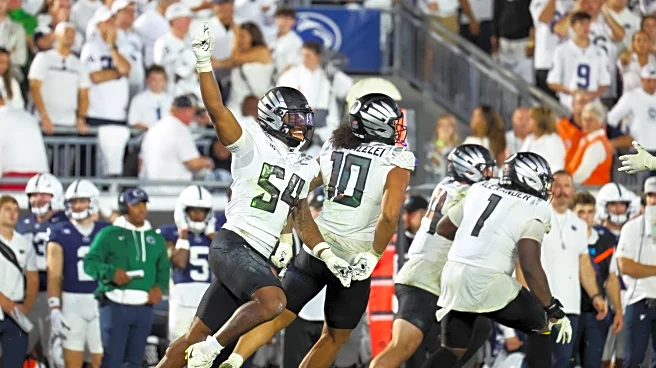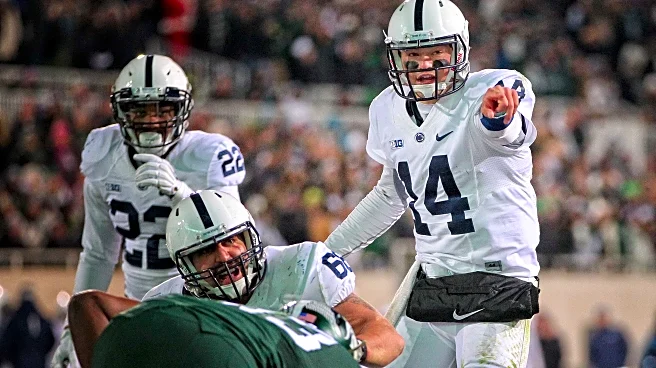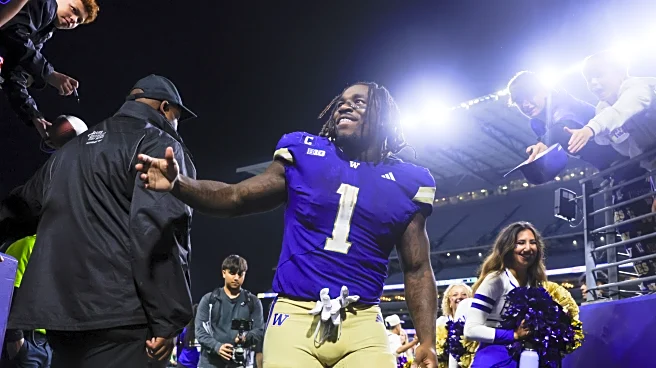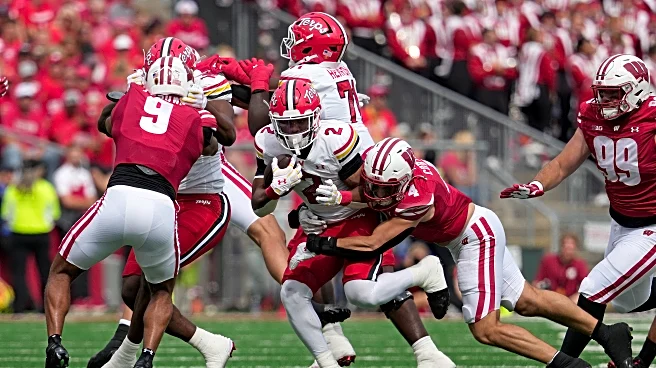What's Happening?
Oklahoma football receiver Keontez Lewis experienced a severe injury during the first quarter of the game against Kent State on October 4. While attempting to catch a touchdown pass, Lewis collided with a brick wall in the end zone at full speed after the ball was overthrown. The impact left him on the field for several moments, prompting immediate attention from trainers and team personnel. Lewis was subsequently stretchered off the field, with the entire Sooners roster showing support as he exited. Lewis, a first-year transfer from Southern Illinois, has been a key player for Oklahoma this season, recording 17 receptions for 210 yards and two touchdowns. His career includes stints at UCLA, Wisconsin, and Southern Illinois before joining Oklahoma for his final season of eligibility.
Why It's Important?
The injury to Keontez Lewis is significant for Oklahoma's football team, as he has been one of their most reliable receivers this season. His absence could impact the team's offensive strategy and performance in upcoming games. The incident also raises concerns about player safety, particularly regarding the proximity of hard surfaces like brick walls to the playing field. This could prompt discussions within the NCAA and among college football teams about improving safety measures to prevent similar injuries. The emotional impact on the team and fans is also considerable, as Lewis has quickly become a valued member of the Sooners' roster.
What's Next?
There is currently no official update on Lewis's condition from Oklahoma, leaving uncertainty about his recovery timeline and potential return to play. The team and coaching staff will likely need to adjust their strategies to compensate for his absence. Additionally, the incident may lead to increased scrutiny of stadium safety standards, potentially influencing future regulations or modifications to ensure player safety. Fans and teammates will be closely monitoring updates on Lewis's health and recovery progress.
Beyond the Headlines
The injury highlights broader issues of player safety in college sports, particularly the need for better infrastructure to protect athletes during high-speed plays. It may also spark conversations about the adequacy of current safety protocols and the role of athletic departments in ensuring the well-being of their players. Long-term, this incident could influence policy changes or inspire innovations in stadium design to enhance safety.

